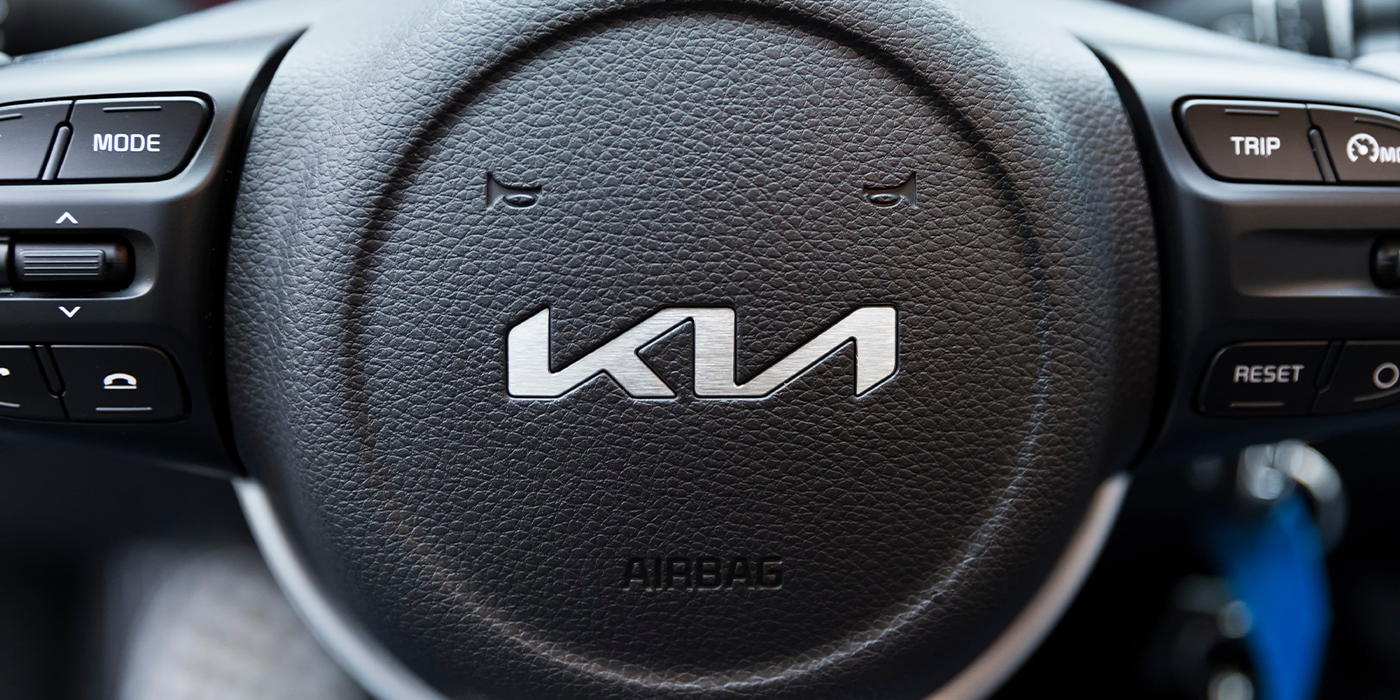Some 1998-2001 1.8L Kia Sephia vehicles built between October 1997 and May 2001, and some 2000-2004 1.8L Spectra vehicles built between February 2000 and March 2004, may exhibit battery discharge when operated in high ambient temperatures for extended periods of time at low speeds or at idle with the A/C, headlamps and other accessories on.
Typically, this results in customers reporting an inability to restart the vehicle. To reduce the incidence of customer complaints about battery discharge, the following new part is available: new higher capacity alternator battery insulator pad (P/N QK2AA 18590).
Battery Test Procedure:
Test the battery using the Micro 570 tester; refer to TSB, SST 002 for instructions.
Alternator Installation:
1. Relieve fuel system pressure by removing the fuel pump relay and running the engine until it stops.
2. Write down the preset radio stations, then disconnect the negative battery cable.
Warning: Fuel vapors are highly flammable. Death or serious injury could result if they’re ignited. Make sure there are no open flames or cigarette smoking in the area of the repair. Adequate ventilation is necessary to prevent a buildup of fumes, which could ignite, causing fire or explosion.
3. Remove the engine cover, if equipped.
4. Unbolt the cruise control assembly from the bulkhead and lay it on top of the engine.
5. Remove the engine ground strap.
6. Remove the fuel line using the Quick Connect Fuel Line Tool (refer to TSB Fuel 005).
7. Disconnect the alternator electrical connections.
8. Loosen the pivot bolt and belt tensioner bolts. Do not remove them.
9. Relieve the tension on the drive belt by rotating the adjustment bolt.
10. Remove the drive belt from the alternator pulley.
11. Remove the belt tensioner hardware.
12. Remove the alternator pivot bolt.
13. Remove the power steering hose bracket bolt and nut.
14. Move the power steering hose to obtain best access for alternator removal.
15. Remove the alternator from the engine compartment.
16. Install the new alternator onto the pivot bolt (leave it loose).
17. Rotate the upper bracket into position on top of the alternator.
18. Place the belt tensioner hardware on top of the alternator.
19. Install the tensioner mounting bolt (leave it loose).
20. Inspect the alternator drive belt and replace it, if necessary.
21. Place the alternator belt on the alternator pulley.
22. Adjust the alternator belt by rotating the adjustment bolt. Allowable belt deflection: new belt – 0.23-0.31 in. (6-8mm); used belt – 0.28-0.35 in. (7-9mm).
23. Tighten the tensioner bolt to 14-9 ft.-lbs. (19-26 Nm).
24. Tighten the pivot bolt to 28-38 ft.-lbs. (38-51 Nm).
25. Connect the electrical connectors to the alternator assembly.
26. Reinstall the fuel line, engine ground strap, cruise control assembly, power steering hose brackets, fuel pump relay and engine cover.
Battery Insulator Pad Installation:
1. Disconnect the positive battery terminal from the battery.
2. Install the cutout portion of the new battery cover toward the bottom front of the battery.
3. Reconnect the battery cables, positive cable first.
4. Set the clock and pre-set radio stations.
5. Start the engine and verify proper operation.
Courtesy of ALLDATA.
For information on products offered by ALLDATA, visit www.alldata.com.













